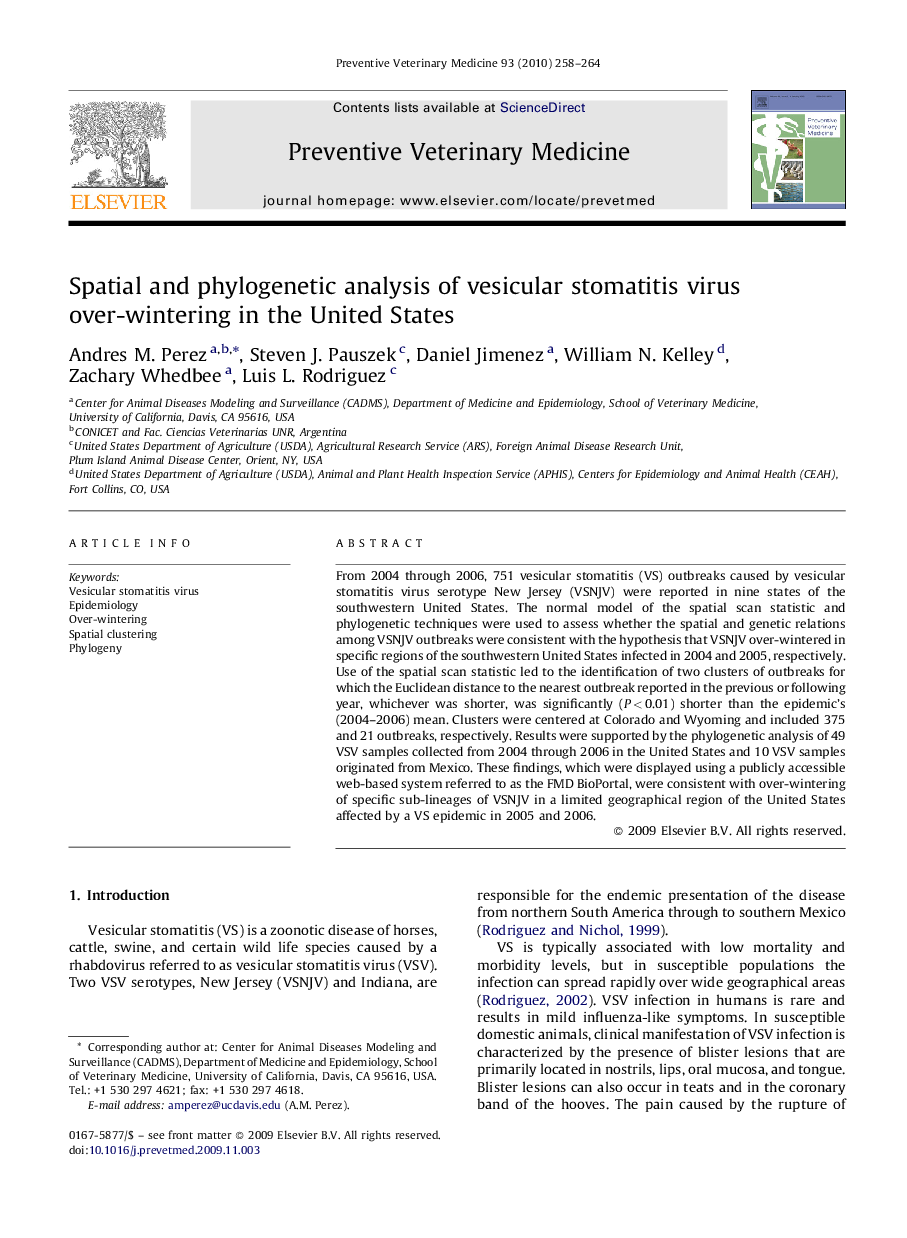| Article ID | Journal | Published Year | Pages | File Type |
|---|---|---|---|---|
| 2453172 | Preventive Veterinary Medicine | 2010 | 7 Pages |
From 2004 through 2006, 751 vesicular stomatitis (VS) outbreaks caused by vesicular stomatitis virus serotype New Jersey (VSNJV) were reported in nine states of the southwestern United States. The normal model of the spatial scan statistic and phylogenetic techniques were used to assess whether the spatial and genetic relations among VSNJV outbreaks were consistent with the hypothesis that VSNJV over-wintered in specific regions of the southwestern United States infected in 2004 and 2005, respectively. Use of the spatial scan statistic led to the identification of two clusters of outbreaks for which the Euclidean distance to the nearest outbreak reported in the previous or following year, whichever was shorter, was significantly (P < 0.01) shorter than the epidemic's (2004–2006) mean. Clusters were centered at Colorado and Wyoming and included 375 and 21 outbreaks, respectively. Results were supported by the phylogenetic analysis of 49 VSV samples collected from 2004 through 2006 in the United States and 10 VSV samples originated from Mexico. These findings, which were displayed using a publicly accessible web-based system referred to as the FMD BioPortal, were consistent with over-wintering of specific sub-lineages of VSNJV in a limited geographical region of the United States affected by a VS epidemic in 2005 and 2006.
